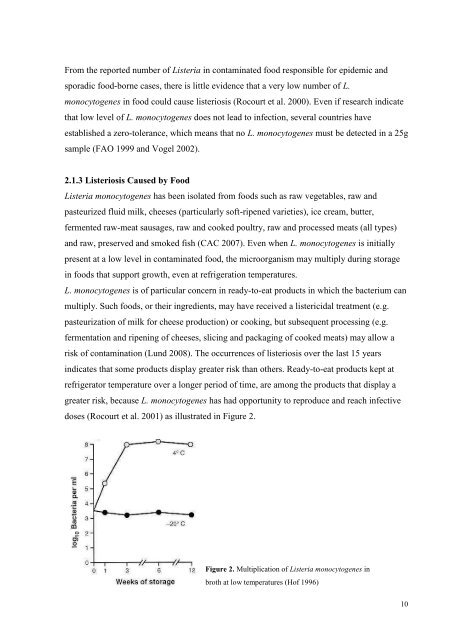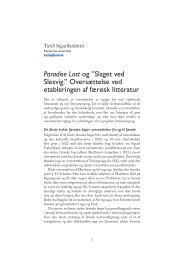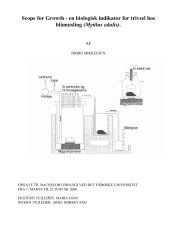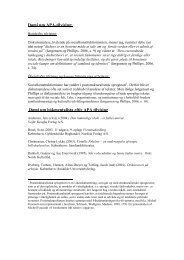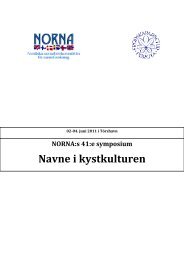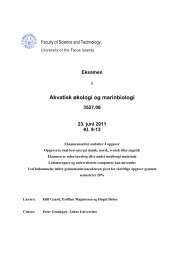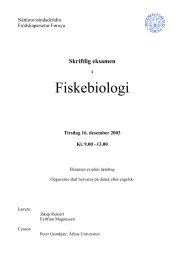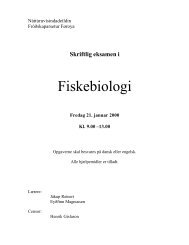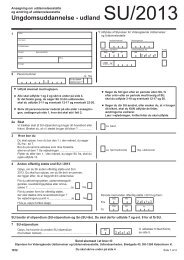Infectious Pancreatic Necrosis Virus (IPNV) - Fróðskaparsetur Føroya
Infectious Pancreatic Necrosis Virus (IPNV) - Fróðskaparsetur Føroya
Infectious Pancreatic Necrosis Virus (IPNV) - Fróðskaparsetur Føroya
You also want an ePaper? Increase the reach of your titles
YUMPU automatically turns print PDFs into web optimized ePapers that Google loves.
From the reported number of Listeria in contaminated food responsible for epidemic and<br />
sporadic food-borne cases, there is little evidence that a very low number of L.<br />
monocytogenes in food could cause listeriosis (Rocourt et al. 2000). Even if research indicate<br />
that low level of L. monocytogenes does not lead to infection, several countries have<br />
established a zero-tolerance, which means that no L. monocytogenes must be detected in a 25g<br />
sample (FAO 1999 and Vogel 2002).<br />
2.1.3 Listeriosis Caused by Food<br />
Listeria monocytogenes has been isolated from foods such as raw vegetables, raw and<br />
pasteurized fluid milk, cheeses (particularly soft-ripened varieties), ice cream, butter,<br />
fermented raw-meat sausages, raw and cooked poultry, raw and processed meats (all types)<br />
and raw, preserved and smoked fish (CAC 2007). Even when L. monocytogenes is initially<br />
present at a low level in contaminated food, the microorganism may multiply during storage<br />
in foods that support growth, even at refrigeration temperatures.<br />
L. monocytogenes is of particular concern in ready-to-eat products in which the bacterium can<br />
multiply. Such foods, or their ingredients, may have received a listericidal treatment (e.g.<br />
pasteurization of milk for cheese production) or cooking, but subsequent processing (e.g.<br />
fermentation and ripening of cheeses, slicing and packaging of cooked meats) may allow a<br />
risk of contamination (Lund 2008). The occurrences of listeriosis over the last 15 years<br />
indicates that some products display greater risk than others. Ready-to-eat products kept at<br />
refrigerator temperature over a longer period of time, are among the products that display a<br />
greater risk, because L. monocytogenes has had opportunity to reproduce and reach infective<br />
doses (Rocourt et al. 2001) as illustrated in Figure 2.<br />
Figure 2. Multiplication of Listeria monocytogenes in<br />
broth at low temperatures (Hof 1996)<br />
10


